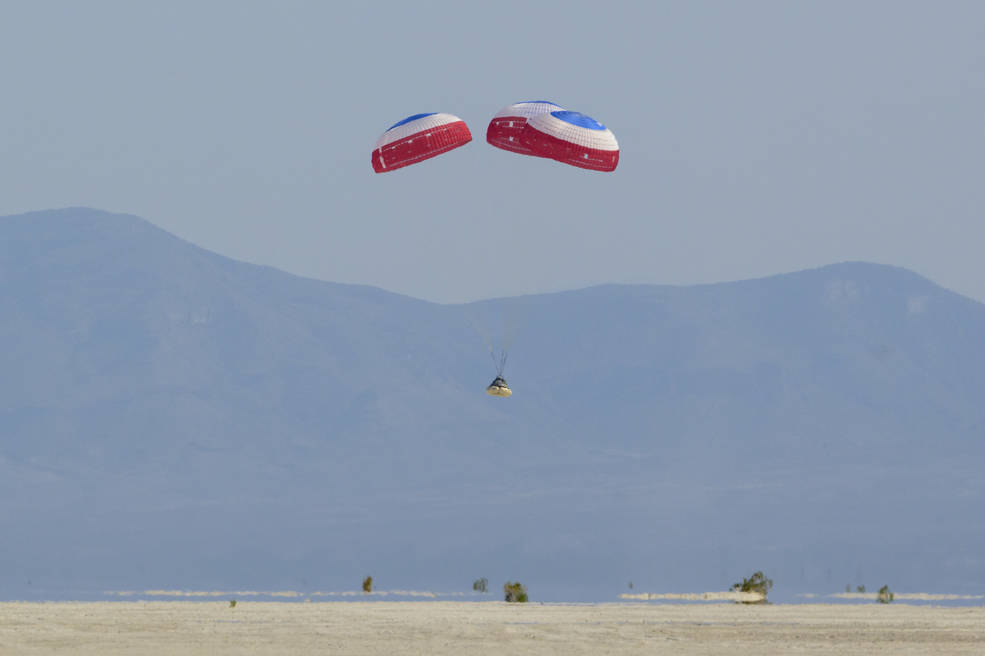Latest News

Boeing’s Starliner spacecraft lands at White Sands Missile Range in New Mexico on May 25, 2022. Photo: NASA/Bill Ingalls
NASA and Boeing successfully completed an uncrewed flight test of the Starliner spacecraft to the International Space Station, ending with a desert landing on Wednesday afternoon.
This was a success for the Starliner spacecraft, which missed its objective in a December 2019 test, resulting in a major NASA review.
The flight test began on May 19, when Starliner launched on the ULA Atlas V rocket from Cape Canaveral Space Force Station in Florida. The spacecraft entered Earth’s orbit and performed a series of demonstrations, then successfully docked with the orbital outpost 26 hours after launch. ISS crew opened hatches and entered the capsule, inspecting the spacecraft.
The spacecraft demonstrated a number of capabilities including approach, rendezvous, and docking with ISS, undocking and departure, and precision landing.
The six-day mission ended at at 4:49 p.m. MDT at at White Sands Missile Range in New Mexico when Starliner touched down its airbags in the desert.
“I am incredibly proud of the dedication and perseverance shown by the NASA, Boeing, and ULA team culminating in the successful completion of Starliner’s second Orbital Flight Test from start to finish,” said Steve Stich, manager of NASA’s Commercial Crew Program. “Throughout this process, Starliner has provided a tremendous amount of valuable data, which we’re continuing to assess in our effort to bring the spacecraft online and fully operational for crew flights to the space station as soon as it is safe to do so.”
The next step is a data review process before a crewed flight test to the station.
Boeing’s Starliner spacecraft is part of NASA’s Commercial Crew Program, through which SpaceX made history as the first privately owned company to launch human beings into space in May 2020. SpaceX now regularly provides crew transport to the ISS for NASA.
Stay connected and get ahead with the leading source of industry intel!
Subscribe Now